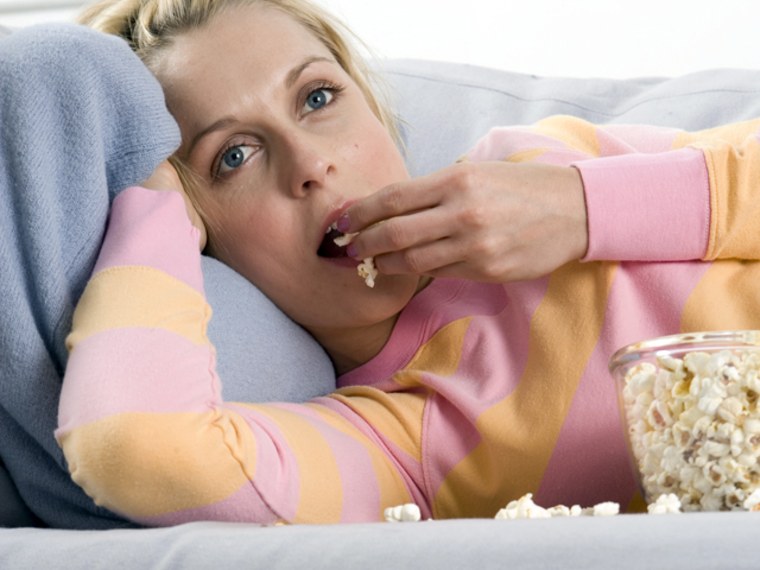By Kristen Dold
Get this: 45 percent of the decisions we make daily are based on habit. That's a tough number to swallow, considering most of us have a ton of habits we'd like to change, or new ones we'd like to start up. The good news is that scientists have discovered a three-step loop of cues, routines, and rewards that can successfully guide us through unlocking those ingrained patterns and starting new ones. We talked to Charles Duhigg, author of The Power of Habit, to learn how.

So how do habits start? The brain converts certain actions into automatic routines because they require less energy (that is, we get to power down and it keeps us from being in constant overdrive). While it's helpful when we're doing things like driving, it's also what makes old habits (and counter-productive ones) difficult to change.
Related: Fix Your Food Slip-Ups
Step 1:
Figure out what it is you're actually craving, or the reward you're seeking. Say you go hunting for office candy every afternoon around 4 pm. What is it you actually want? A quick hit of energy? Social time with your colleagues? When the urge hits, try four different things (Monday grab an apple, Tuesday go outside for a walk, Wednesday gossip with your coworkers, etc.). 15 minutes after the action, ask yourself, 'Do I still have the urge?' You should be able determine the true "craving" within a week.
Related: Go Ahead, Indulge Your Craving
Step 2:
Isolate the trigger that's setting off the habit. What cues you to crave candy? Most fit into one of five categories: location, time, emotional state, other people, or what you were doing immediately before the behavior. So when the urge hits to patrol for loose jellybeans, write down where you are, the time, your emotional state, who else is around, and what you were doing right before you felt the hankering. Do it four days in a row and you'll find a pattern. The answer might be that you're programmed at 3:30 pm on the dot to want something.
Related: Pick the treat with only 100 calories
Step 3:
Create a plan for changing the habit. Once you've figured out your habit loop (the reward driving your behavior and the cue triggering it) you can re-engineer it and shift the behavior. It's much easier to take advantage of an existing habit when building a new routine, so piggyback on something you're already doing. If a quick hit of energy is the reward you're seeking, and the cue is 3:30 in the afternoon, write a plan such as "Every day at 3:30 I'll go outside and walk around the block." Set an alarm so that you remember, and after a few weeks, it won't feel like a routine.
Related: Here's how to train your brain to battle the bulge before it ruins your diet plan
Try This Chocolate Trick
Duhigg says you'll have much more success establishing a habit if you give yourself a reward you actually enjoy. "The number one way to start an exercise habit is to give yourself a piece of chocolate after the workout," he says. If you're just starting out, your brain hasn't learned to enjoy your endorphins, the natural reward for exercise, yet. But you can trick your brain into associating a genuine reward with that cue and routine. Within two weeks, Duhigg says you won't want the chocolate anymore.
Related: The Healthiest Types of Chocolate
More Links:
More Simple Tips for Breaking Bad Habits
Beat Stress: Emotional Eating Isn't Always Bad
More TODAY Health:
Does organic food turn people into jerks?
Oversharing on Facebook as satisfying as sex?
The reason you can always find room for dessert